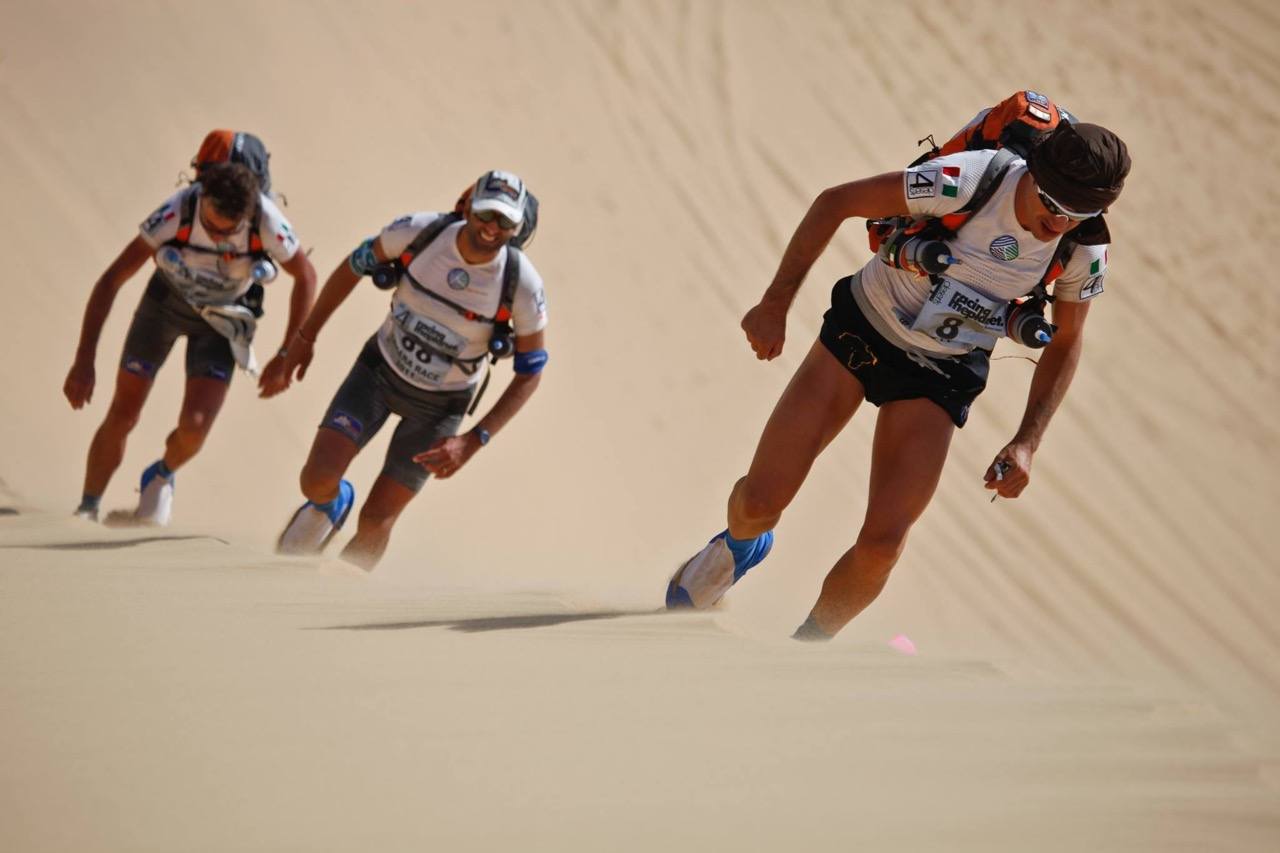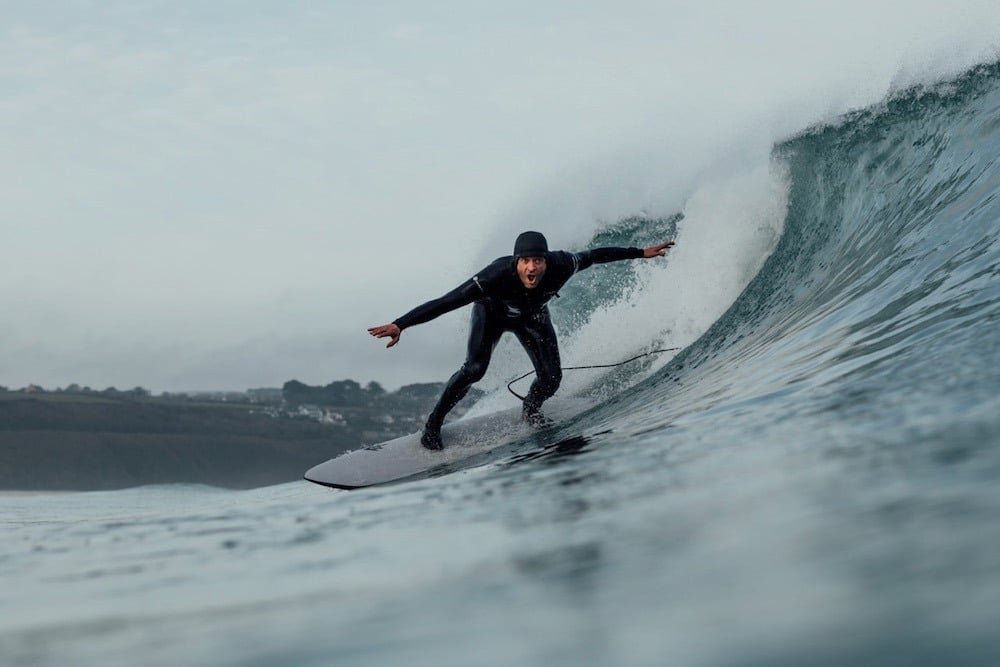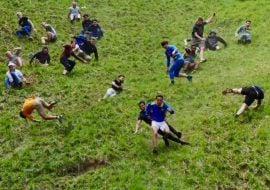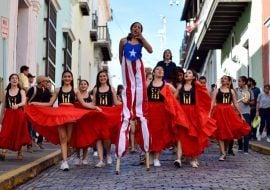The World’s Toughest Endurance Race Series


Top 20 Things to Know About the 4 Deserts Grand Slam Before You Sign-up
To say that participants competing in the 4 Deserts Grand Slam are mentally tough is an understatement. These men and women are going beyond the limits of physical fitness and mental endurance. Not only are the 4 Deserts located in some of the largest and most perilous deserts on the planet, but it is also a 7-day, 250-kilometer running race 100% self-supported.
Yup! You heard it correctly. All participants are required to carry their own equipment and food in some of the most barren and challenging landscapes. And, while it might not seem reassuring to most, drinking water and a tent are provided by the series.
Below, we’ve outlined a few important details about each of the 4 Desert races and the differences between them when it comes to location, climate, weather, and more. Along with that, we have listed a Top 20 list of, what we feel, are some of the most important pieces of information to note before signing up (if you dare) for one of the most intense and challenging endurance races in the world.
Namib Race

Along the dune ridge in the Namib Race. Photo Credit: 4Deserts
Date: November
Location: Skeleton Coast National Park in Swakopmund, Namibia
Climate: One of the oldest deserts with the largest dunes in the world spanning 300 meters high and 32 kilometers long. The
Weather: One of the driest countries in Southern Africa. Temperatures on the coast can get down to 10 degrees Celsius at night and reach 25 degrees Celsius during the day. Expect coastal fog and a breeze. Humidity is low and wind can be a factor.
Gobi March

Running through the Gobi Desert. Photo credit: 4Deserts
Date: June
Location: The Gobi Desert in Hami, eastern Xinjiang Province, China
Climate: 5th largest and windiest desert in the world. Varies in topography to include plain, desert, and mountain climates.
Weather: Temperature changes over the course of the race and can include intermittent rain, sleet, and high winds. Temps can reach 40 degrees Celsius during the Summertime. The area gets less than 27mm of rain per year.
Fun Fact: The Gobi march was founded in honor of three missionaries: Mildred Cable and sisters Francesca and Eva French.
Atacama Crossing

A starry night during Atacama Crossing race. Photo Credit: 4Deserts
Date: September / October
Location: Atacama Desert in San Pedro de Atacama, Chile
Climate: The driest non-polar desert in the world and one of the driest places on Earth.
Weather: Extreme weather is likely including strong winds and rain. Temperatures -1 degree Celsius by night and 35 degrees Celsius by day.
Fun Fact: People began to settle in the Atacama Desert around 1500BC according to some research.
The Last Desert*

Danko Island surrounded by icebergs at the Last Desert race. Photo Credit: 4Deserts
Date: November
Location: Weather permitting, this race takes place in up to 6 locations in the Antarctic Peninsula and Mainland.
Climate: The largest desert in the world with 70% of the world’s fresh water (or ice, rather). It is the coldest, driest, and windiest continent and has the highest average elevation.
Weather: Temperatures can be -89.2 Celsius although with the race happening in the Southern Hemisphere summer, temperatures are expected to be around -20 Celsius. Racers can expect winds and very strong sun and more than 20 hours of daylight.
Fun Fact: As of 2016, there are roughly 135 permanent residents with up to 5,000 people residing throughout the year at the research stations across Antarctica.
*Invitation only
Top 20 Things to Know about the deserts ultramarathon:

Atacama Crossing part of the 4 Deserts Grand Slam. Photo Credit: 4Deserts
1. Athletes can compete in the 4 races in any order they would like except for The Last Desert race in Antarctica.
2. The Last Desert race in Antarctica is an invitation-only race (must complete 2 other races to get an invite).
3. There are approx. 47 competitors have completes the 4 Deserts Grand Slam in a one-year period of time.
4. The quickest completion of the 4 Deserts was a time of 23 hours, 12 minutes, and 33 seconds.
5. 20% of participants run the entire course, 60% combine walking and running, and 20% walk the entire course.
6. You can’t take your sweet time and go as long as you want, because there are cut off times! Cut-off times are based on an average speed of 4km per hour.
7. You must be between the age of 21 and 70 to compete.
8. 80% of competitors are men and the remaining 20% are women.
9. Worried about safety on the course? There is a pro-medical team working on-site throughout the event. There is approximately 1 medical doctor per every 25 competitors.
10. In ten years, there have been over 10,000 competitor registrations for the 4 Desert races.
11. The Sahara Race has been relocated to Namibia due to instability and conflict in Northern Africa where it normally occurs.
12. These races do not require qualification, but don’t think you can just sign up without months of training.
13. You need a medical certificate from a registered physician before race day.
14. The cost isn’t cheap either! The entry fee is around $3,700 per event.
15. All 4 events are capped between 150-200 competitors.
16. Expect solitude. While the races start out thick with people, sooner than later, the crowd thins and you are on your own in a desolate, hot or freezing environment.
17. Time Magazine recently ranked the 4 Deserts #2 on its list of the world’s top endurance competitions.
18. You’re not just racing for yourself, you’re racing for charity. Millions of dollars have been raised for hundreds of charities around the world through the 4 Desert Series races.
19. If you find a running buddy, don’t expect to “chat” with them. There could be a language barrier. There are more than 30 countries represented in each 4 Desert race.
20. You can compete as a team or individual.
And, if the above Top 20 isn’t enough to rev-your-engine, maybe a few words of wisdom and advice straight from the horse’s mouth would help! We had a chance to speak with the Event Director with the 4 Deserts Race Series, the lovely, Sam Fanshawe. Here’s what she had to say (brace yourself for goosebumps):

Competitors for The Last Desert will be boarding the expedition ship in Ushuaia to head to the spectacular location of Antarctica! Photo Credit: 4Deserts
NAT: Why should someone choose this series over other adventure races around the world?
SAM: The 4 Deserts Race Series are life-changing for some and life-enhancing for all. Many life- long friendships have been made during 4 Deserts races – some that have ended up with wedding bells! Amid the stunning scenery in places that are usually hard to get to / explore, pushing your mental and physical limits life gets put into perspective about what is truly important. The race participants are limited in number to enhance the experience and camaraderie making the experience very personal and one that veterans remember for the rest of their life (and come back again and again to experience).
NAT: It sounds like these events are not for the faint of heart. Is there a training regimen that you recommend to anyone who is going to try to take this on for the first time? Maybe it isn’t for first-timers?
SAM: The race attracts first-timers and the ultra-experienced. To finish on the podium you need to put in many miles on the trails and in the gym. To finish you just need to want to be there and get to the finish line. Training should involve 40 – 120kms per week (speed depends on your end goal) with some cross-training thrown in and a couple of peak weeks. It is not unusual for first-timers in long-distance stage races to finish on top.
NAT: Of the 4 Deserts, which do you believe is the toughest?
SAM: The answer to this is different for everyone. To cover 250km in 7 days on foot in any terrain or climate is a challenge. Some say the Sahara Race is the easiest as there is minimal elevation and the weather is more temperate – but if you get a blister on day one it will be the hardest!
NAT: Have you done the 4 Deserts Grand Slam? Or one of the 4 Deserts?
SAM: I have completed a 4 Deserts race – the Gobi March – and I loved it. The opportunity to run / hike free at your own pace on a marked course with checkpoints every 10kms full of excited and encouraging volunteer and medical teams are priceless. Then when you get to camp all you have to do is eat, sleep, stretch, recover and chat with interesting people from all around the world.
NAT: Do you anticipate the series to grow beyond 4 Deserts?
SAM: We already have the 4 Deserts race PLUS the Racing The Planet race which moves to a new location each year. We have ideas for new formats but for now, we are focusing on the core five races that we know and love.
NAT: Since participants can choose, does that mean that some participants would be racing in both 2017 and 2018 depending on which event they start with? I am assuming they have to compete on the dates that are listed on your website?
SAM: Some people just do one 4 Deserts Race. Most come back again and again. Then there are the elite few who choose to do the 4 Deserts Grand Slam (or Grand Slam PLUS – just 7 in the world!). For those who want to do the Grand Slam, they have to complete all the races in the same calendar year – therefore they need to complete the races in the order they are scheduled for the year. For those who want to just complete one or all of them in their own time they can do so in any order and over any period of time – they will still become members of the 4 Deserts Club for completing all 4 Deserts races even if it takes them thirteen years (which it recently did take Christopher Lewis – a Welshman who lives in Japan. Chris has completed every RacingThePlanet race and the Gobi March a few times in that period). However, you can only join The Last Desert (Antarctica) after receiving the invitation which is sent to those who have completed at least two of the 4 Deserts Races.
NAT: Any hints on what is to come for 2018?
SAM: Watch this space (our Facebook page, Instagram and Twitter accounts and the newsletter).
NAT: What can you tell me is the coolest experience you have seen from these events either as a participant or event director?
SAM: There are so many!!! Sleeping in traditional yurts on the Gobi March course or listening to the local Namibian camp team (from one of the local tribes) chanting around the campfire each night. There are just too many to write them all down.
NAT: I would imagine these events are life-changing for many…any cool stories to share in that regard?
SAM: Also so, so, so many.
A Belgian man and a Welsh man were sharing a tent in one race. They both came back to another race and embraced like life-long friends – however, they had only been at one race together and neither speaks the other’s language.
There have been plenty of marriages that have resulted from the races. There have also been a few engagements (of people who came to the race together). Recently a couple came to The Last Desert and we arranged for them to be married by the ship captain on the shoes of Antarctica surrounded by running friends and penguins.
Being a checkpoint when one competitor decided to withdrew – they were hot and tired and handed in their bib. They were resting at the checkpoint when a blind competitor came through with his guide – he rested a while to deal with his awful blisters and then prepared to get up and carry on. The person who had decided to withdraw took back their bib and carried on to finish the race.
NAT: Wow, Sam. That last story gave me goosebumps! I am in awe of these stories and experiences.
Well, it seems as though these races can change your life and your perspective whether you are looking for a challenge, adventure, or even love. 🙂 They are much more than just “another race”. They are a true test for some of the strongest people in the world, both mentally and physically. For those of you looking for the next best thing in adventure challenges and travel, I think this is your best bet! Sign up.
For more information, please visit 4 Deserts.
Last updated on Sep 21, 2020Have you subscribed to our Newsletter or Podcast? Listen to us on Apple Podcast and Spotify and follow us on Facebook, Instagram Twitter and YouTube.








